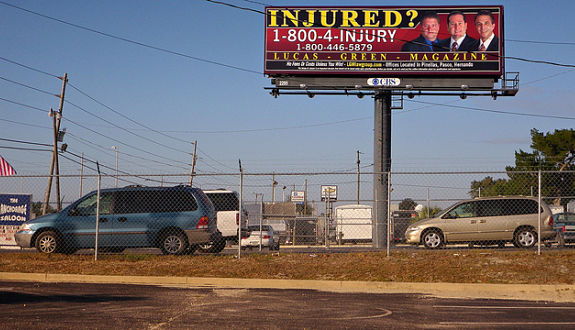Legal Field Trips: Personal Injury Law
- by
- May 16, 2018
- Legal Jobs, Legal Life
- Reviewed by: Matt Riley


To complete our series on various legal practices areas, we’re going to dive into the much maligned world of personal injury law.
Personal injury lawyers are often pejoratively referred to as “ambulance chasers” because they — more in myth than fact — are thought to follow ambulances to the scenes of accidents in order to pick up new, injured clients. So, is it fair to consider these lawyers the used car salesmen of the legal world? And what exactly do these lawyers do?
I worked at a small personal injury firm when I was in undergrad (and by small, I mean approximately four attorneys and four paralegals). Because there was a lot of work to be done, I got a pretty good sense of all aspects of the work. Generally, clients would come in, tell their stories, and the firm would follow up with an investigation into (usually) the car accident that caused the injury. Then, the firm would draft a demand letter, which would be sent to the other party’s insurance company. This would result in either a settlement or the litigation would proceed to discovery. In discovery, the firm would prepare interrogatories (i.e. … questions) and requests for production of documents to further bolster the claim for coverage.
Once there was a settlement, the firm would go about trying to ensure that all of the parties received the money due to them. Generally, this meant ensuring that there was money for the client, money for the client’s medical providers, and money for the attorneys. Part of this process would often involve calling medical providers and asking them to reduce their rates. For example, I had to make a lot of calls regarding MRIs, wherein I would try to convince a doctor to charge one-third to one-half of the amount he originally billed. It wasn’t my favorite activity. In some cases, the attorneys would waive or substantially reduce their fee to ensure that not all the money was siphoned off to the healthcare providers.
If a settlement wasn’t forthcoming, the firm would often farm out the case to another firm that could handle the trial side. This was not a particularly common occurrence, given that most of the insurance policies were pretty small and payouts were eventually forthcoming. In my year at the firm, I don’t recall a single case that went to trial, and certainly not one that the attorneys at my firm took to trial.
All in all, I experienced nothing that would indicate unethical or sleazy behavior from the attorneys or the paralegals at the firm. While they did try to advertise aggressively, they never targeted victims and they did so only to increase their business in the normal course. As I said, the attorneys were often willing to waive their fees in order to help the needier clients. I was impressed by their generosity and their bedside manner when dealing with injuries parties.
The work of a personal injury lawyer can be rote and somewhat uninspiring. And there are certainly cases where the injuries may not justify the amounts requested (although none that I personally witnessed). But in a lot of cases, attorneys have the opportunity to help clients receive the money they need to move on from a horrible accident.
As one additional note, the so-called “biglaw” firms generally don’t handle personal injury — their rates are too high for most individuals to afford them in the first place. If you’re interested in this type of work, you’re probably going to look for a smaller firm and you probably won’t make close to as much money. In some cases, however, it provides a more sustainable lifestyle than the crush of legal work in the corporate world.
So, that completes our primer on various legal practices. I hope you have a few more talking points for your interviews, and I recommend you dig deeper into any practice areas that you find potentially interesting and try working on as many different types of matters as you can while you’re a summer associate to get a better understanding of actually practicing law.
Search the Blog

Free LSAT Practice Account
Sign up for a free Blueprint LSAT account and get access to a free trial of the Self-Paced Course and a free practice LSAT with a detailed score report, mind-blowing analytics, and explanatory videos.
Learn More
Popular Posts
-
logic games Game Over: LSAC Says Farewell to Logic Games
-
General LSAT Advice How to Get a 180 on the LSAT
-
Entertainment Revisiting Elle's LSAT Journey from Legally Blonde








